From 17:30 to 19:45 on Thursday 16th January 2025, there will be a parade of planets across the sky in the plane of the ecliptic. For newer astronomers, this is the plane of the solar system across the sky or the arc where you see the Sun, the Moon and planets move along. It is to the South with the celestial bodies rising on the East (to your left) and setting in the West (to your right) when looking South.
These can still be seen early evening February.
Star Maps & Apps
Here are some star maps I took from Stellarium. Obviously the pictures are a little distorted but this was to show the full horizon from East to West looking South with Guildford as the default location. (This is accurate enough for most of the UK).
If you have never used a star map before, you will notice East and West are reversed because if you hold it up to match the sky over your head, they will end up in the correct place as long as you are standing facing South.
I recommend if you want to see as many planets as possible you find the lowest horizon around you and whilst we normally recommend finding the darkest sky possible, planets are quite bright
If you want to use an app, the ones I use are Stellarium, Sky Safari and Skyview, but there are plenty of decent apps, just bear in mind, they do ruin your night vision and you may need to calibrate them as they can usually work out where you are, but not all of them automatically detect the direction you are facing. So read up on how to calibrate your app of choice in advance.
Finally, do make sure you dress up warm and are somewhere safe.
Which Planets Can I See?
Mars will be slightly more orange in Gemini, Jupiter will be near a bright star called Aldebaran in Taurus and Venus and Saturn will be next to each other in Aquarius. Uranus is mentioned and that will be near the Pleiades (out of this view but at a higher elevation, however, it will not be visible to the naked eye.
Sky at 18:00 GMT Without Constellations
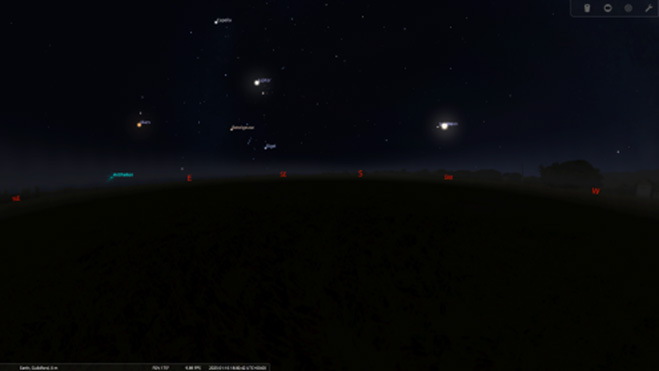
Sky at 18:00 GMT With Constellations
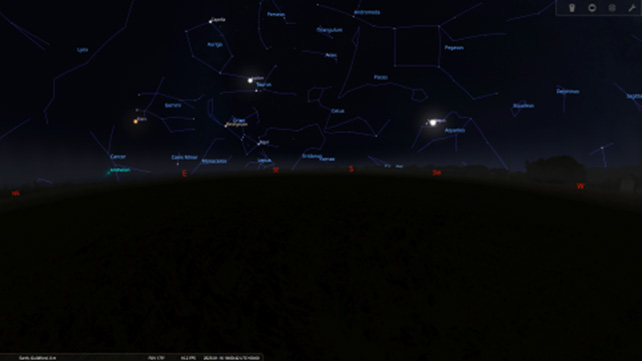
At around 19:30 the nearly full Moon will rise to the East washing out the stars in the Eastern sky, but you may wish to see that as well, and around 20:00 Venus and Saturn will be setting over the Western Horizon.
Sky at 19:45 GMT Without Constellations
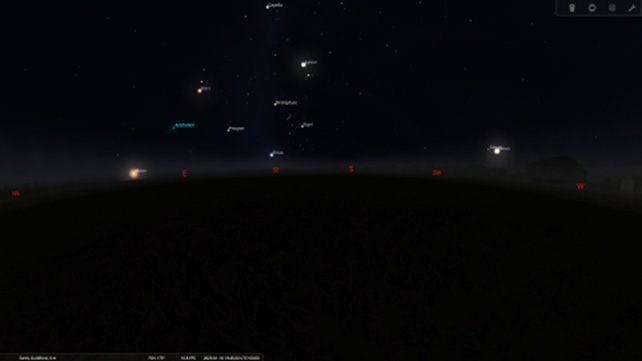
Sky at 19:45 GMT With Constellations
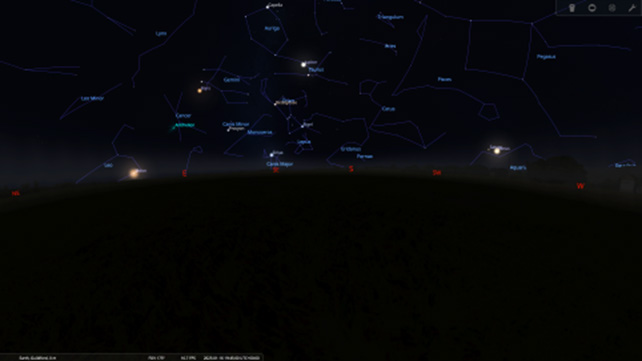
If you do have a telescope or optics and want to try for Uranus, here is a zoomed in area, you can find it from Orion or Jupiter.
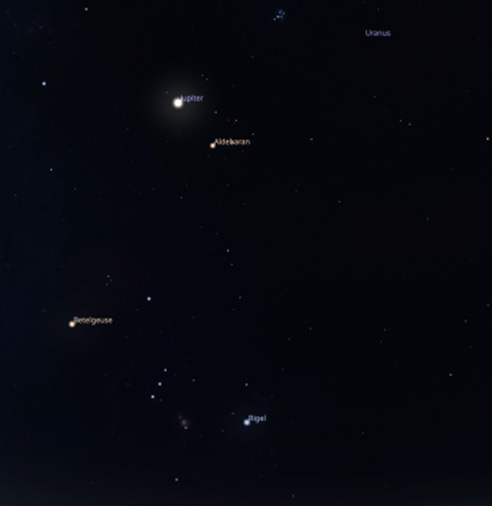


Comments are closed